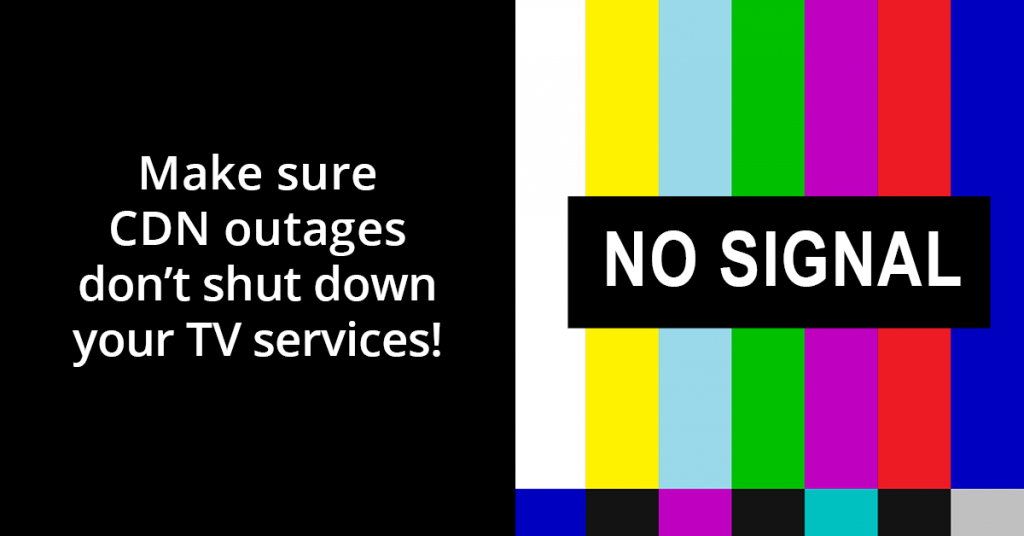How can broadcasters and streaming companies arm themselves against global CDN outages?
It sounds a little counterintuitive but one of the ways that anyone can arm themselves against CDN outages is to understand that there will be CDN outages. It’s certainly a matter of when, not if. The internet, which also includes CDNs, is built as a best effort network and needs to be so because that means it’s able to constantly evolve and adapt.
This means that it’s unrealistic and would be incredibly costly for broadcasters and streaming providers to try and deploy networks or IP-based workflows which are completely immune to outages. Instead they need to create a multi-CDN environment with built-in failsafe options that helps them to manage issues as soon as (or even before) they impact the end users’ experience.
As the industry adopts more IP workflows, how much damage could an outage on the internet cause?
It goes without saying that IP workflows and contribution or delivery networks bring so much fantastic value and opportunity for broadcasters and streaming companies but networks going down can of course present major issues. When you look at live events in particular – where many people are relying on feeds delivered via IP, or consumers are watching internet-delivered services, this damage to a user’s quality of experience can be pretty significant.
But these weren’t non-existent in a pre-IP world and can actually be mitigated faster and more easily if they’re being managed over an IP network than they would have been using more traditional production workflows. Especially with the right tools in place.
What redundancies should companies using IP have in place if such an event occurs?
Failsafes that need to be integrated into any type of CDN include having available redundant capacity in your networks to move traffic to in the event of an outage. This can be managed by monitoring tools which give a real-time overview of your networks and act automatically in the event of any issue.
Monitoring tools provide data and insights into a network’s performance and can automatically move affected users to available capacity should they detect quality issues; acting before anyone notices anything is wrong. Automated and real-time switching to another CDN to avoid quality impacting issues is key since broadcasters and service providers will not know when and where an issue will occur and automated processes can spot them faster than if they were to be done manually.
How can CDNs work with the media industry to ensure services are not affected?
It’s possible to have a good, multipurpose CDN delivering different kinds of media and information but for the contribution and delivery of high-resolution video content, it’s really important to understand the specifics of this type of content. The monitoring and management tools that we’ve spoken about are designed specifically for those where delivering high quality video is a key part of their business. This means broadcasters and content providers can better mitigate any potential quality issues for their end customers.
CDN outages aren’t just a media problem, but an internet problem. So a similar approach should be taken for any CDN deployment, whether it’s for publishers’ news sites like the NYT or the Guardian, application software updates or the BBC’s iPlayer services.
By Johan Bolin, CTO of Agile Content
Learn about how Edgeware and Agile Content can help mitigate quality issues with our CDN selection and switching solution.
ARE YOU READY FOR TV BEYOND BROADCAST?
Fill out the form below and we will get in touch with you.
